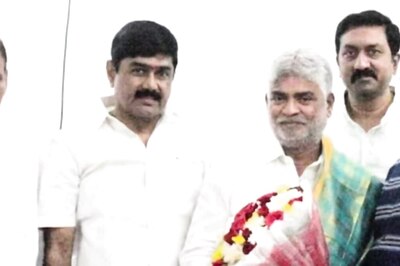
views
The marketing initiative of Kerala tourism is exploring new heights domestically. The latest to its addition is the Utsavam (December to February), a cultural programme coordinated by the department started five years ago. This programme succeeded in staging more than 100 art forms across the state under the leadership of District Tourism Promotion Councils in a season.Apart from marketing the destination, prominence was given to events such as traditional folks, rituals, tribal and traditional art forms that are on the verge of extinction. This was an attempt to familiarise the art forms of different places from a cross section of hitherto unknown programmes.As an observer of Utsavam for the last few years, I could see many events got branded in the minds of the people. Eg: Tholpavakooth was only heard in North Malabar, but through Utsavam, people started to recognize its importance, timings and historical relevance. On the other side, Theyyam (meaning Daivam, God, a performance included in Utsavam) became popular in southern districts. If Kerala is called God’s Own Country, Kasargod and Kannur can be better called God’s Own Land, where people can see God.Every year authorities could bring uniqueness to this programme, thereby keeping the product live in its lifecycle. If we see the philanthropic aspect of Utsavam, it is a livelihood for the performing artists. Many of these art forms and their costumes were on the verge of destruction. About 1000 artists and their families benefit by staging the shows from state. Utsavam has high academic value. A cultural research scholar can visit venues during weekends to see a variety of programmes to pick data on the stage. They can avoid quoting answers provided through RTI to substantiate their dissertation. The interactive session before the performance helps them draw a bench mark. The concept of responsible tourism (RT) has new dimension through Utsavam with the participation of local bodies, tourism clubs, NGOs and youth clubs. Even though tourism is called as smokeless industry, it is a fact that it damages the environment. But the participation of local people minimizes the damage. Fund is not a problem to arrange this fest due to government spending. The events are arranged in the peak tourism period. Slowly over the years foreign tourists are also attracted to these events. On the tourism intangible infrastructure side successive governments are doing tremendous work to explore the potential. The international tourist arrival in 2011 was over 11 percent and there was jump in domestic travellers as well. Foreign tourists plan their itinerary according to the Theyyam calendar in North Malabar. We can see them in many of the Kalityattam (Theyyam performance) venues.The biggest challenge before the service providers in tourism industry is to give better quality products in terms of tangibles and intangibles. Visitors need value for their money. Creation of intangible values for tourism products is a very complex process. Government spends crores of rupees through road shows and multimedia campaign to make the destination Kerala attractive. It is the responsibility of operators to treat the guests with honour. The immediate beneficiary of government-sponsored tourism promotion is the service providers; they are mostly from private sector. (The writer is management faculty member, Kannur University MBA campus. The views in the article are the writer’s own).


















Comments
0 comment